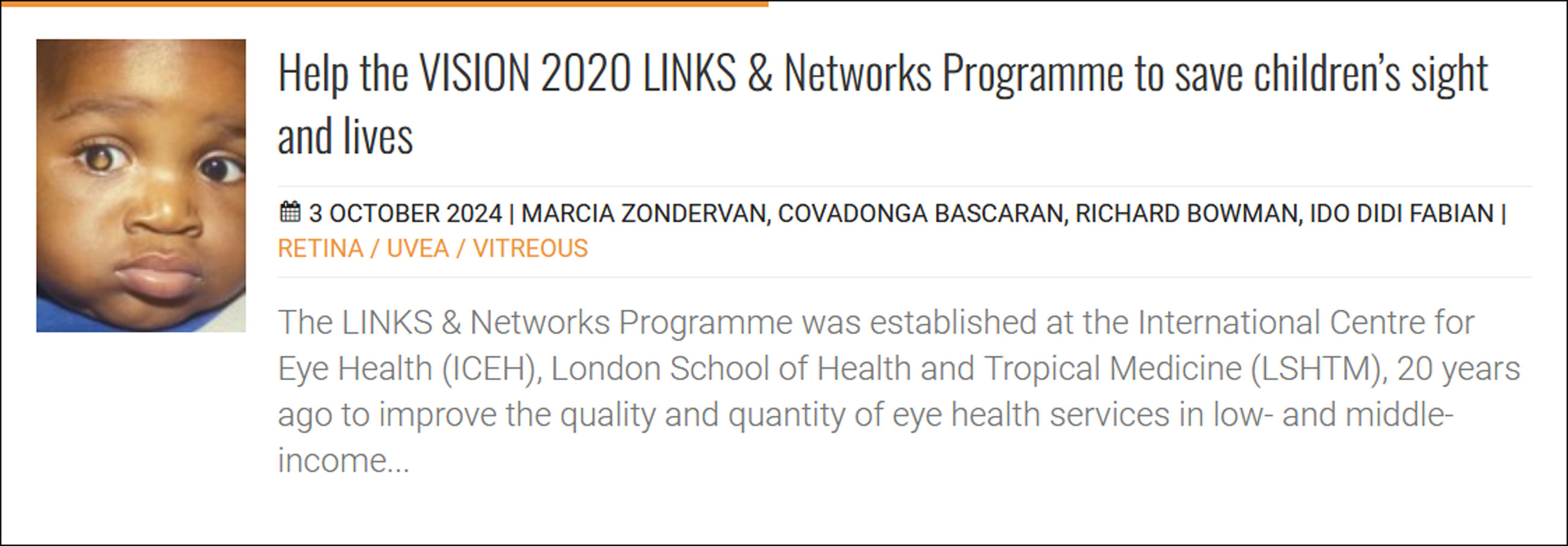“Serendipity is looking in a haystack for a needle and discovering a farmer’s daughter”
– Julius Comroe Jr (Surgeon, Medical Researcher and Author)
One of the attractive features of ophthalmology, apart from the good quality of life and the relatively quiet on calls from home of course, was the ability to make a difference to patients by improving their sight through cataract surgery. The earliest mention of cataract surgery dates from the technique of couching in the 5th century BC.
Over the millennia, the procedure has undergone numerous revisions and refinements to where we are today with small incision phacoemulsification and intraocular lens (IOL) implantation surgery. It is estimated that currently 28 million patients benefit from this operation worldwide per year. For Eye News October/November 2024, we celebrate the 75th anniversary of the intraocular lens implant, whose development has ultimately made this procedure possible. It could also be considered to be the most important ophthalmological advancement of the 20th century.

Alongside many other important scientific developments, the intraocular lens was a serendipitous discovery. The Ophthalmologist Sir Harold Ridley observed during the Second World War that one of the Royal Air Force pilots who had sustained ocular trauma also had intraocular plastic shrapnel which remained inert over many years. This inspired him to collaborate with the plastics division of Imperial Chemical Industries to design the first IOL made of polymethylmethacrylate, which was predominantly used in airplanes at that time. On 29 November 1949 Sir Ridley performed the first implant of an IOL at St Thomas’ Hospital in London, a fact that I was reminded of by a surgeon in Banská Bystrica, Slovakia in 1993, when I witnessed my first cataract operation as a medical student.
For Oct/Nov 2024 there are many absorbing and thought-provoking articles where you may also make a serendipitous discovery. Looking to the future, Saqqaw details the top five emerging technologies revolutionising ophthalmology; Antaki describes the large language models in ophthalmology; and Taylor discusses ways of implementing technology to improve global eye health. As we pay more attention to our carbon footprint in every aspect of our lives, Vyas reports on the progress being made with sustainability in ophthalmology. There are further discussions relating to cataract surgery including Goldsmith’s insight into an Andean Medical Mission cataract surgical audit; Singh on the importance of addressing cataract-induced blindness in women; and Manzouri’s report on cataract charity work in Cambodia. Even further afield in the South Atlantic, Turner describes the ophthalmology services in the Falkland Islands. With the Trainee updates, the Pathology Quiz, our all-new Culture Section, a selection of intriguing case reports, Bogus Pete’s latest Halloween nightmare (muhaha!), once again there is something for everyone in this latest bumper selection.
Another aspect to ophthalmology which has always appealed to me is the research being carried out and constant innovations being developed to advance our speciality and improve the care for our patients. My hope is that Eye News will be a forum for ophthalmology where we bring to you the latest advancements that could potentially change the way you practice in this field. Who knows in what serendipitous ways these new ophthalmological discoveries will be made? – PC
CLICK BELOW FOR THE OCTOBER/NOVEMBER 2024 ARTICLES


























